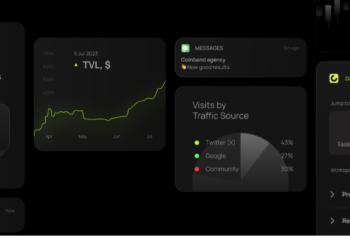With rapid advances in Artificial Intelligence (AI), the technology is being applied in more and more ways; from the opening of a Marvel movie to becoming an online girlfriend. Another growing use has been helping people learn a new language.
A mix of general AI chatbots, AI tools specifically designed for learning, and AI features added to existing language learning apps have all opened a new way for people to learn a language — through AI.
Research has shown the benefits of using these language-learning tools. The ability to practise a language without actually having to know speakers or live in a country where it is spoken. However, according to the BBC such applications are limited in what languages you can practise. Common European languages are most common, while languages that are not as normally used on the internet or have a writing system different to English are not as easy to practise through AI. This is an issue that has been prevalent in AI chatbots.
Students switch to AI to learn languages https://t.co/PqCmRv6TTy
— BBC News (UK) (@BBCNews) June 23, 2023
Replika
Chatbots such as Replika – “The AI companion who cares” – are already being used as a way to practise languages, even if that’s not what they were originally designed for. Replika was originally envisioned as a personal AI that could help you “express and witness yourself by having a helpful conversation.”
Related Articles: AI’s Threat to Humanity Rivals Pandemics and Nuclear War, Industry Leaders Warn | Artificial Intelligence: How Worried Should We Be? | Who Is Liable if AI Violates Your Human Rights?
As Blanka Klímová, an associate professor of applied linguistics at the University of Hradec Králové in Czechia, told the BBC, the app has been useful for her students to practise informal English. However there are some major drawbacks: the conversations could become repetitive, language corrections are missing. In some cases the chatbot would ask students for sexy pictures. Something Klimova described as “quite abusive.”
AI learning apps
New companies have already started tailoring AI specifically to language learning, with the AI language tutor TalkPal AI claiming to be “the most efficient way to learn a language.” While another chatbot, Langotalk, claims to make learning languages six times faster. They let users have conversations in the language they wish to learn, as well as receiving feedback and tips on their language learning.
Dualigno Max
Established language learning apps have not sat idle on AI. In March, Duolingo, the most widely used language learning app, launched a new subscription level: Duolingo Max. This learning experience introduced two new features powered by the AI technology GPT-4.
Created by OpenAI, it is a chatbot that lets you have human-like conversations with an AI. It can answer your questions or help you with tasks such as writing an essay. It would give feedback on learners’ language skills and could do roleplays. The former would help explain why their answer was right or wrong for certain exercise types.
However, at launch it was only available for Spanish and French courses for English speakers on iOS in the U.S., Great Britain, Ireland, Canada, Australia, and New Zealand. Though Duilingo has said they are planning to expand it to more countries and for more courses.
While advocates say the integration of AI into language learning is transforming the way we acquire new languages, the AI language learning model is still in its early stages with many flaws and setbacks. Despite this, new and old companies are seeking to use the technology and users around the world are already taking advantage of it.
Editor’s Note: The opinions expressed here by the authors are their own, not those of Impakter.com — In the Featured Photo: Artificial Intelligence brain. Featured Photo Credit: Wikimedia Commons.










